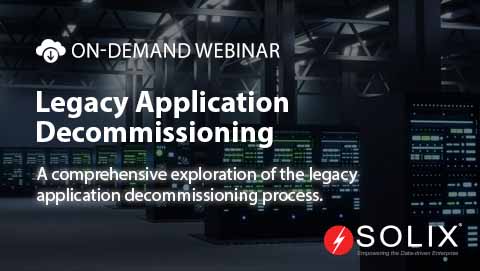Legacy System Data Migration
Today’s tech-fueled world digital world, businesses are constantly faced with the challenge of migrating data from outdated legacy systems to modern, more efficient platforms. Legacy system data migration is a complex and time-consuming process that can be a daunting task for any organization.
As a guest blogger with a background in computer engineering and experience in AI and machine learning, I have seen firsthand the struggles that companies face when dealing with legacy system data migration. The need to modernize and streamline operations is crucial for staying competitive in the market.
Legacy system data migration can often seem like an insurmountable mountain to climb, with countless obstacles and roadblocks along the way. From outdated infrastructure to incompatible systems, the process can be riddled with challenges that can stall progress and hinder innovation.
This is where Solix comes in. With their innovative solutions and cutting-edge technology, Solix offers a game-changing approach to legacy system data migration that can help businesses overcome the hurdles and achieve seamless migration to modern platforms.
Imagine for a second your in a scenario where a company, let’s call them Acme Corporation, is struggling to migrate their data from an outdated legacy system to a more efficient cloud-based platform. The process is arduous and time-consuming, with the potential for costly errors and setbacks at every turn.
By partnering with Solix, Acme Corporation is able to leverage SolixCloud Application Retirement and Decommissioning, a comprehensive solution that enables organizations to retire and decommission legacy applications at a low, fixed monthly cost. This not only streamlines the migration process but also helps reduce infrastructure costs and improve overall efficiency.
Cost savings from legacy application decommissioning can be as easy as walking through the data center and picking up one-hundred-dollar bills. A study conducted by the Compliance, Governance, and Oversight Council showed that the average annual cost savings for decommissioning inactive applications were $40,000, with the potential to exceed $120,000 for larger enterprise-class applications.
Furthermore, Solix’s Enterprise Archiving solution provides a fully managed, cloud-scale, compliant archive repository for less-active enterprise data, helping organizations reduce costs, improve performance, and meet compliance objectives.
By harnessing the power of Solix’s Advanced Information Lifecycle Management (ILM) solutions, organizations can manage data throughout its lifecycle, optimize infrastructure, and establish governance and compliance frameworks that ensure data integrity and security.
In today’s digital landscape, Legacy System Data Migration may seem like a daunting task, but with the right tools and solutions, it can be a seamless and cost-effective process. Solix’s innovative approach to legacy system data migration is a game-changer for businesses of all sizes, offering unmatched efficiency, cost savings, and peace of mind.
- Reduce costs and improve efficiency with Solix’s innovative approach to legacy system data migration.
- Achieve seamless migration to modern platforms without disruption to your business.
- Establish governance and compliance frameworks that ensure data integrity and security.
- Experience a proven track record of success with Solix’s satisfied clients, including Unilever, AIG, Citi, GE, and Santander.
Remember, legacy system data migration doesn’t have to be a headache. With Solix by your side, you can achieve seamless migration, cost savings, and peace of mind. Don’t let outdated legacy systems hold your business back. Contact Solix today and experience the difference for yourself.
And who knows, by partnering with Solix, you could be on your way to winning $100 to reward yourself for making a smart business decision. Simply enter your email on the right for a chance to win. The possibilities are endless when you choose Solix for your legacy system data migration needs.





